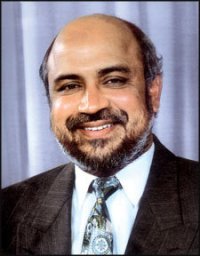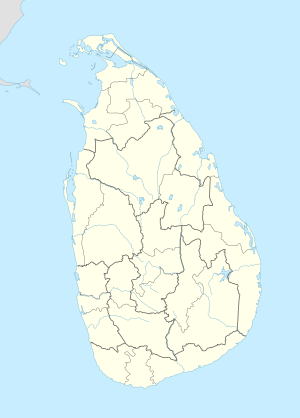Tamil Makkal Viduthalai Pulikal (TMVP), previously known as the "Karuna Group", is a political party in Sri Lanka. It was formed by Karuna Amman, a former leader of the Liberation Tigers of Tamil Eelam, after he defected from the organization in 2004. Initially a paramilitary group that helped the Sri Lankan Government fight the Tamil Tigers, the TMVP was registered as a political party in 2007. Under deputy leader Pillayan, they contested their first provincial elections in 2008, winning a majority in the Eastern Provincial Council. Members of the TMVP continue to carry arms under the auspices of the Sri Lankan government, which they claim is for their own safety from the Tamil Tigers, who carry out repeated attacks against them. The group is believed to be working with the Sri Lankan Army. They have been accused of human rights violation by local and international human rights organization.
Human rights in Sri Lanka provides for fundamental rights in the country. The Sri Lanka Constitution states that every person is entitled to freedom of thought, conscience and religion, including the freedom to have or to adopt a religion or belief of his choice. And, that every person is equal before the law.
The expulsion of the Muslims from the Northern province was an act of ethnic cleansing carried out by the Tamil militant Liberation Tigers of Tamil Eelam (LTTE) organization in October 1990. Yogi, the LTTE's political spokesman, stated that this expulsion was carried out in retaliation for atrocities committed against Tamils in the Eastern Province by Muslims, who were seen by the LTTE as collaborators with the Sri Lankan Army. As a consequence, in October 1990, the LTTE forcibly expelled 72,000 Muslims from the Northern Province.
The Eastern University massacre was the arrest and subsequent mass murder of 158 minority Sri Lankan Tamil refugees who had taken refuge in the Eastern University campus close to the city Batticaloa on September 5, 1990. A witness identified Sri Lankan Army personnel as the perpetrators. The event is part of what is known amongst Sri Lankan Tamils as Black September, a series of civilian massacres. The Sri Lankan government eventually established a presidential commission of inquiry. The inquiry found evidence of illegal abductions and mass murder. It also named the responsible parties, but there is currently no evidence of any judicial follow up to the inquiry.

Kattankudy is a township near the city of Batticaloa on the eastern coast of Sri Lanka. The town is predominantly populated by Muslims.

Eelam War II is the name given to the second phase of armed conflict between Sri Lankan military and the separatist Liberation Tigers of Tamil Eelam. The war started after the failure of peace talks between the Premadasa government and the LTTE. This phase of the war was initiated by the LTTE who massacred almost 600 Sinhalese and Muslim police personnel after they were ordered by the Premadasa government to surrender to the LTTE. The truce was broken on June 10, 1990 when the LTTE in October expelled all the 28,000 Muslims residing in Jaffna.

Eugene John Hebert was an American-born Jesuit missionary in Sri Lanka. He along with his Tamil driver Betram Francis disappeared on August 15, 1990 as the Sri Lankan civil war was raging. He went missing on his way to the eastern city of Batticaloa from a nearby town of Valaichchenai. He was known for his Human Rights activity on behalf of the local civilians. The Jesuits believe that he was killed along with his driver.

Mohammed Hussain Mohammed Ashraff was a Sri Lankan lawyer, politician, government minister and founder/leader of the Sri Lanka Muslim Congress.
A mass murder of Sri Lankan Police officers took place on 11 June 1990. Members of the Liberation Tigers of Tamil Eelam (LTTE), a militant organization, are alleged to have killed over 600 unarmed Sri Lanka Police officers in Eastern Province, Sri Lanka. Some accounts have estimated the number killed as high as 774. It was the deadliest terrorist incident in the world at the time until the September 11 attacks occurred in 2001.
Kattankudy Urban Council (KUC) is the local authority for the town of Kattankudy in eastern Sri Lanka. KUC is responsible for providing a variety of local public services including roads, sanitation, drains, housing, libraries, public parks and recreational facilities. It has 9 members elected using the open list proportional representation system.
Mahamood Lebbe Alim Mohamed Hizbullah is a Sri Lankan politician and state minister. He was a minor presidential candidate in the 2019 presidential elections.
Terrorism in Sri Lanka has been a highly destructive phenomenon during the periods of the Sri Lankan Civil War (1983–2009) and the first and second JVP insurrections. A common definition of terrorism is the systematic use or threatened use of violence to intimidate a population or government for political, religious, or ideological goals. Sri Lanka is a country that has experienced some of the worst known acts of modern terrorism, such as suicide bombings, massacres of civilians and assassination of political and social leaders, that posed a significant threat to the society, economy and development of the country. The Prevention of Terrorism Act of 1978 is the legislation, that provides the powers to law enforcement officers to deal with issues related to terrorism in Sri Lanka. It was first enacted as a temporary law in 1979 under the presidency of J. R. Jayewardene, and later made permanent in 1982.

The 1987 Eastern Province massacres were a series of massacres of the Sinhalese population in the Eastern Province of Sri Lanka by Tamil mobs and Liberation Tigers of Tamil Eelam (LTTE) during the Sri Lankan Civil War. Though they began spontaneously, they became more organized, with the LTTE leading the violence. Over 200 Sinhalese were killed by mob and militant violence, and over 20,000 fled the Eastern Province. The violence has been described as having had the appearance of a pogrom.
The Eravur massacre was a massacre of Sri Lankan Muslims in Eravur by the Liberation Tigers of Tamil Eelam (LTTE). The LTTE denied its involvement, but eyewitnesses and observers claim it was an LTTE massacre. The casualty figure is unclear, ranging from 116 - 173.
The Kurukkalmadam massacre was a massacre of Sri Lankan Muslims in Kurukkalmadam by the Liberation Tigers of Tamil Eelam (LTTE). The number of casualties is estimated to be 60-168.
The Veeramunai massacres refers to the mass killing and disappearances of over 250 Tamil civilians by Sri Lankan security forces and Muslim home guards in 1990.





